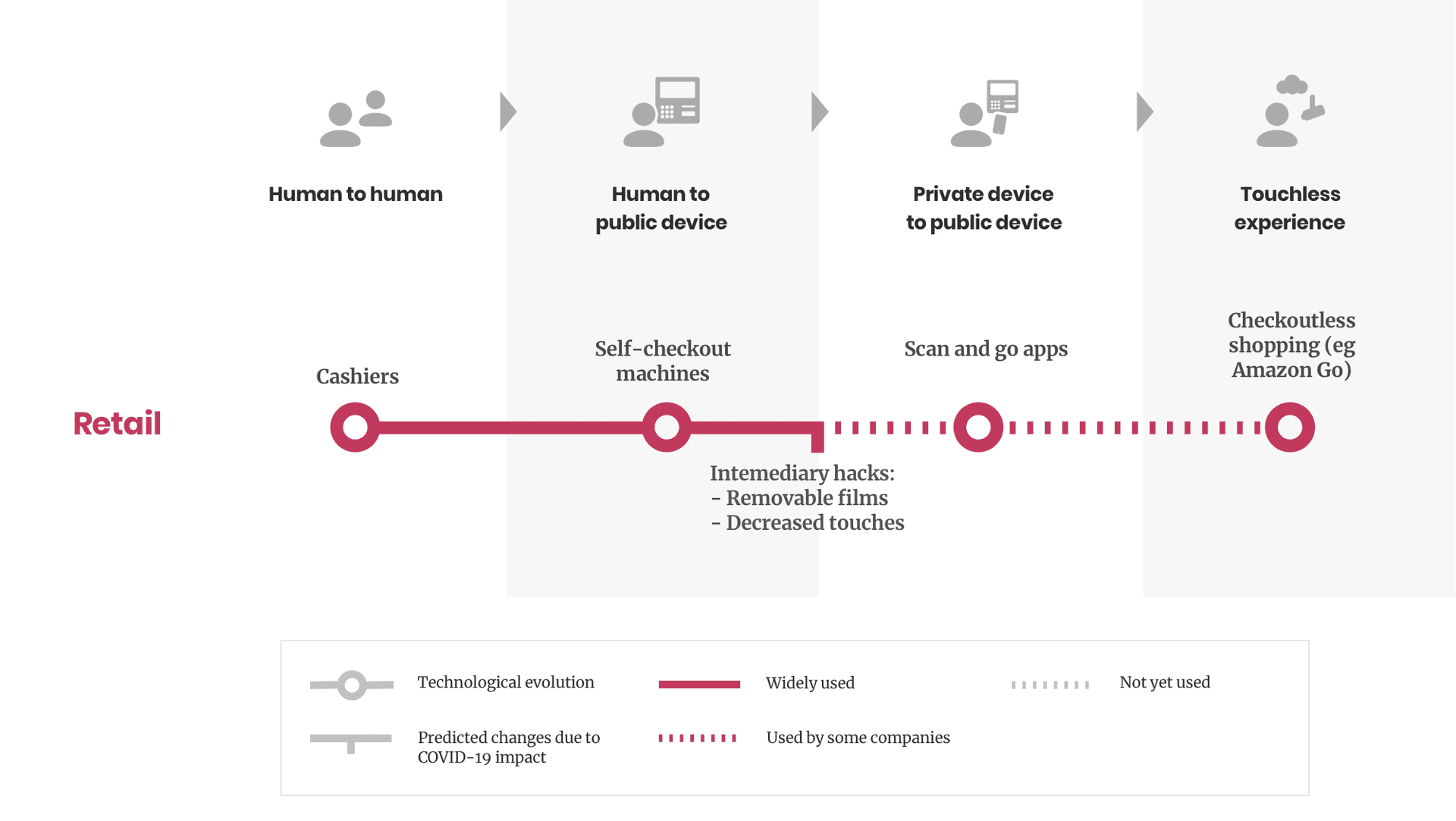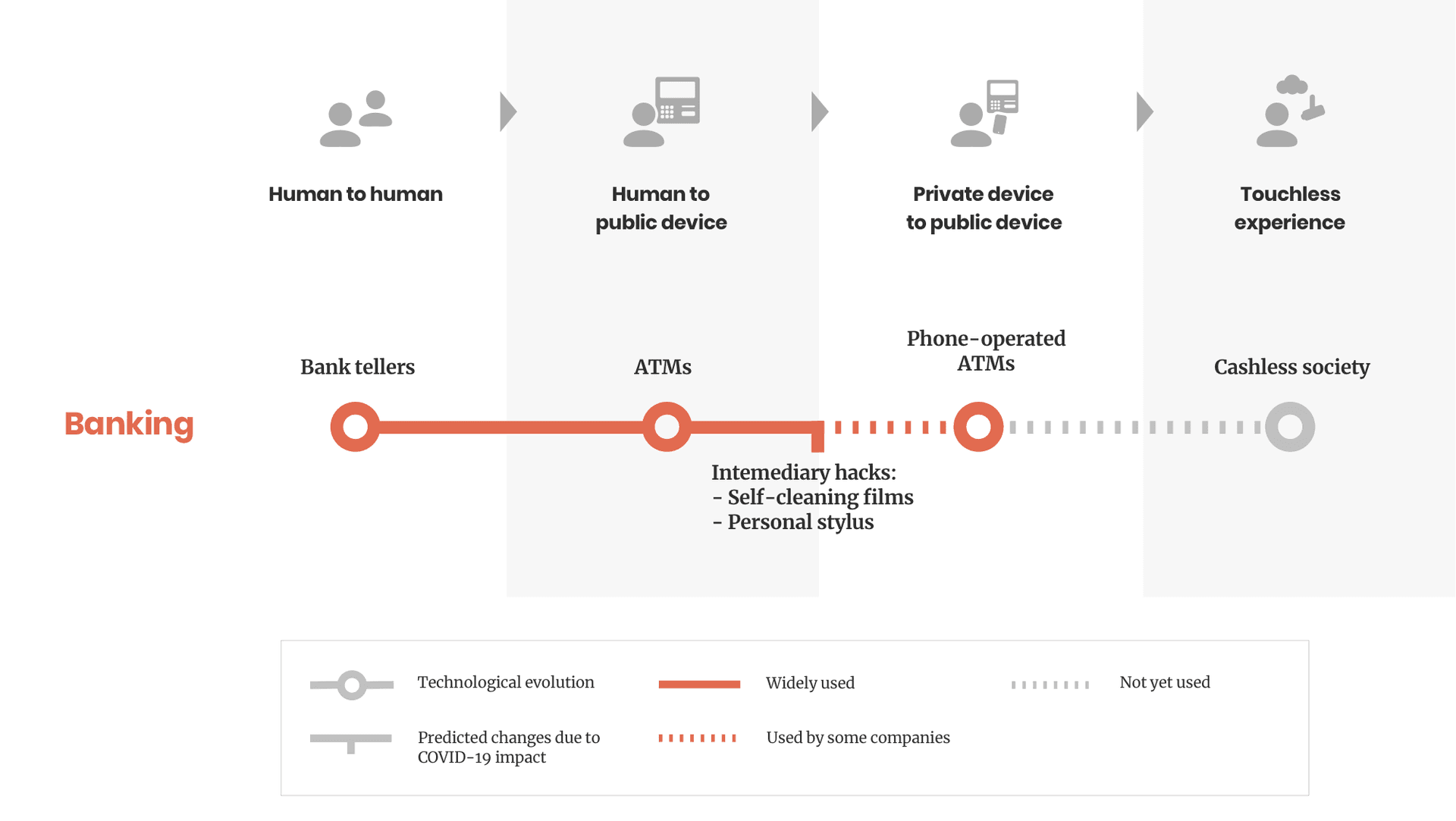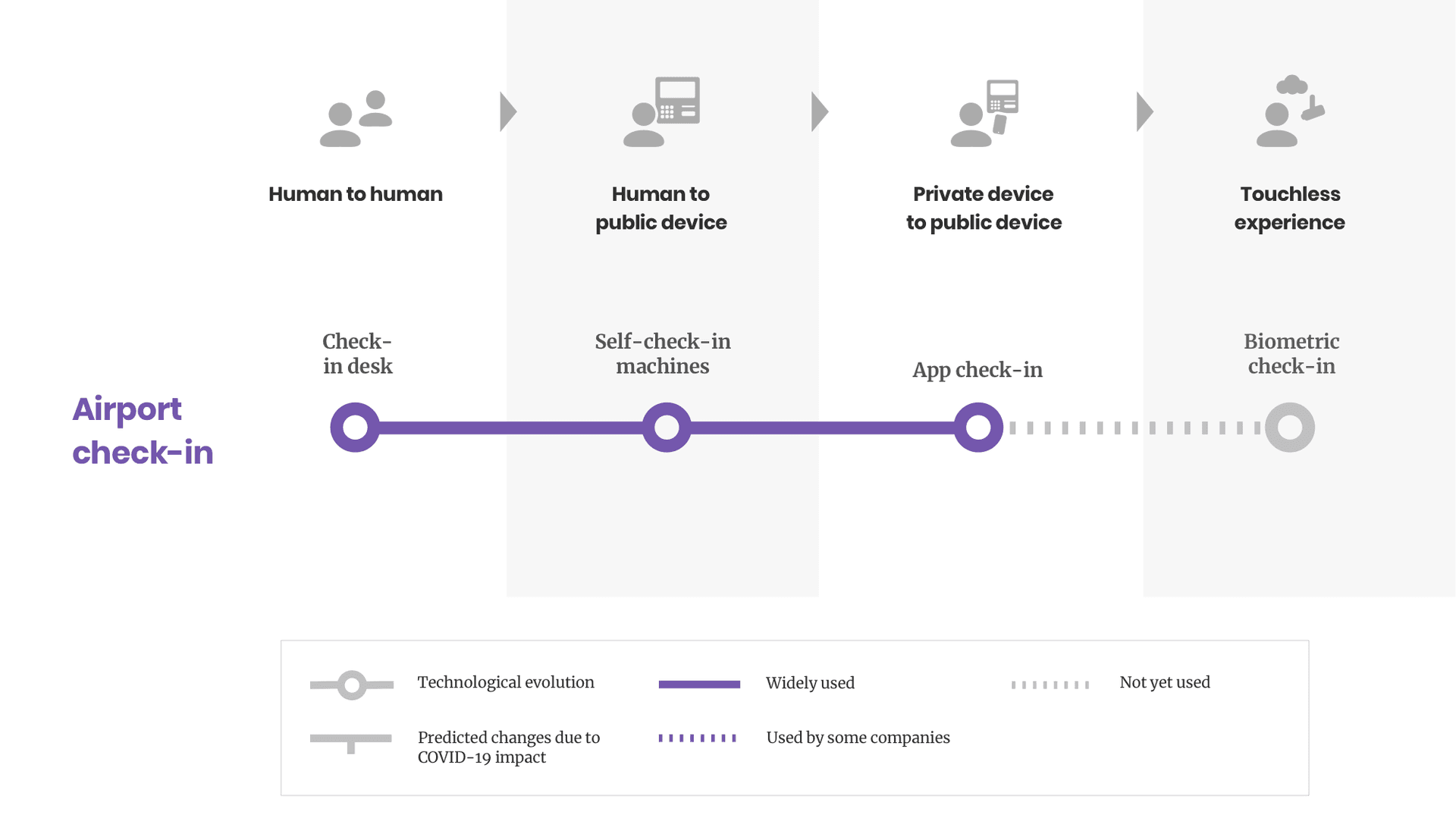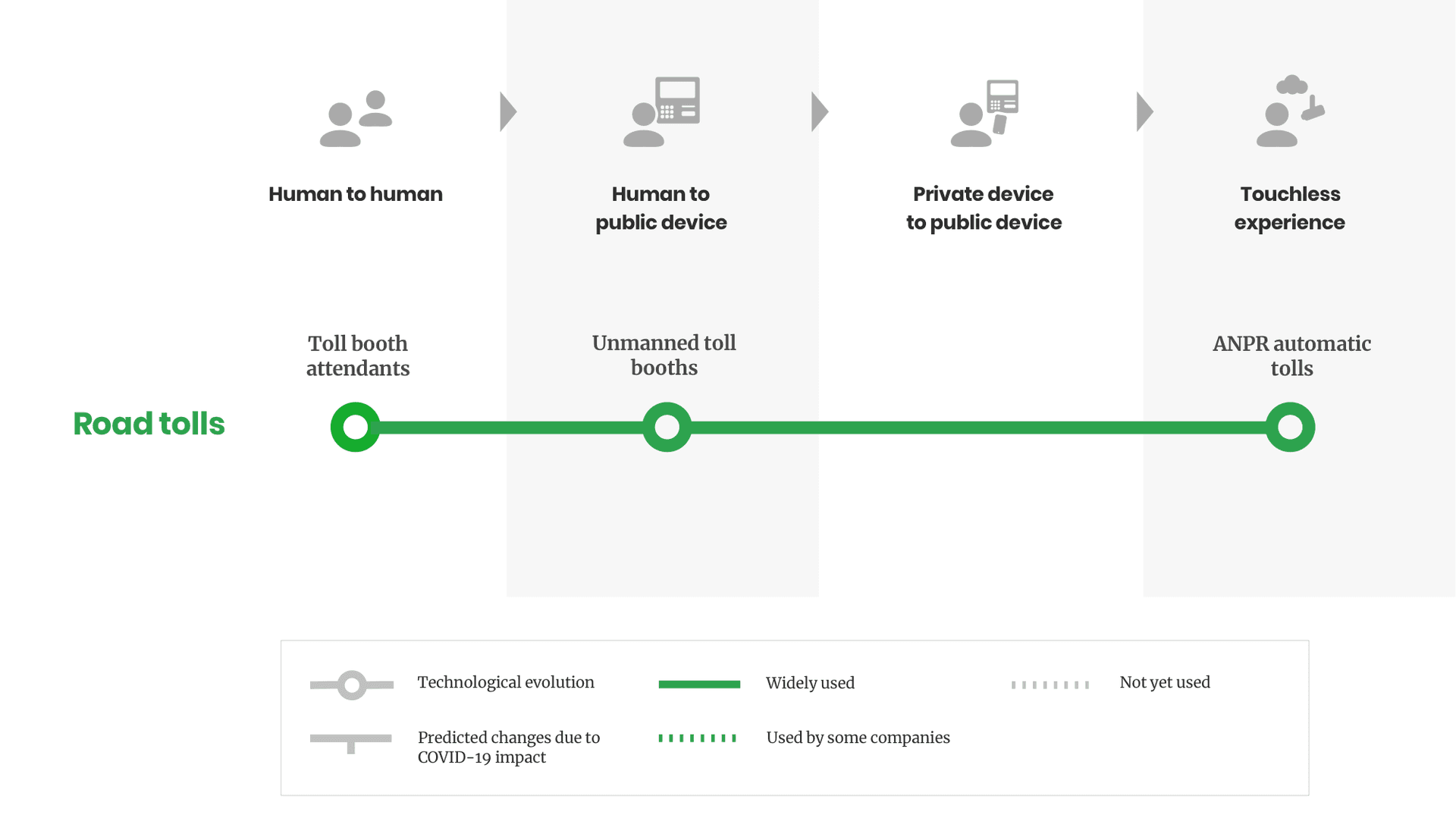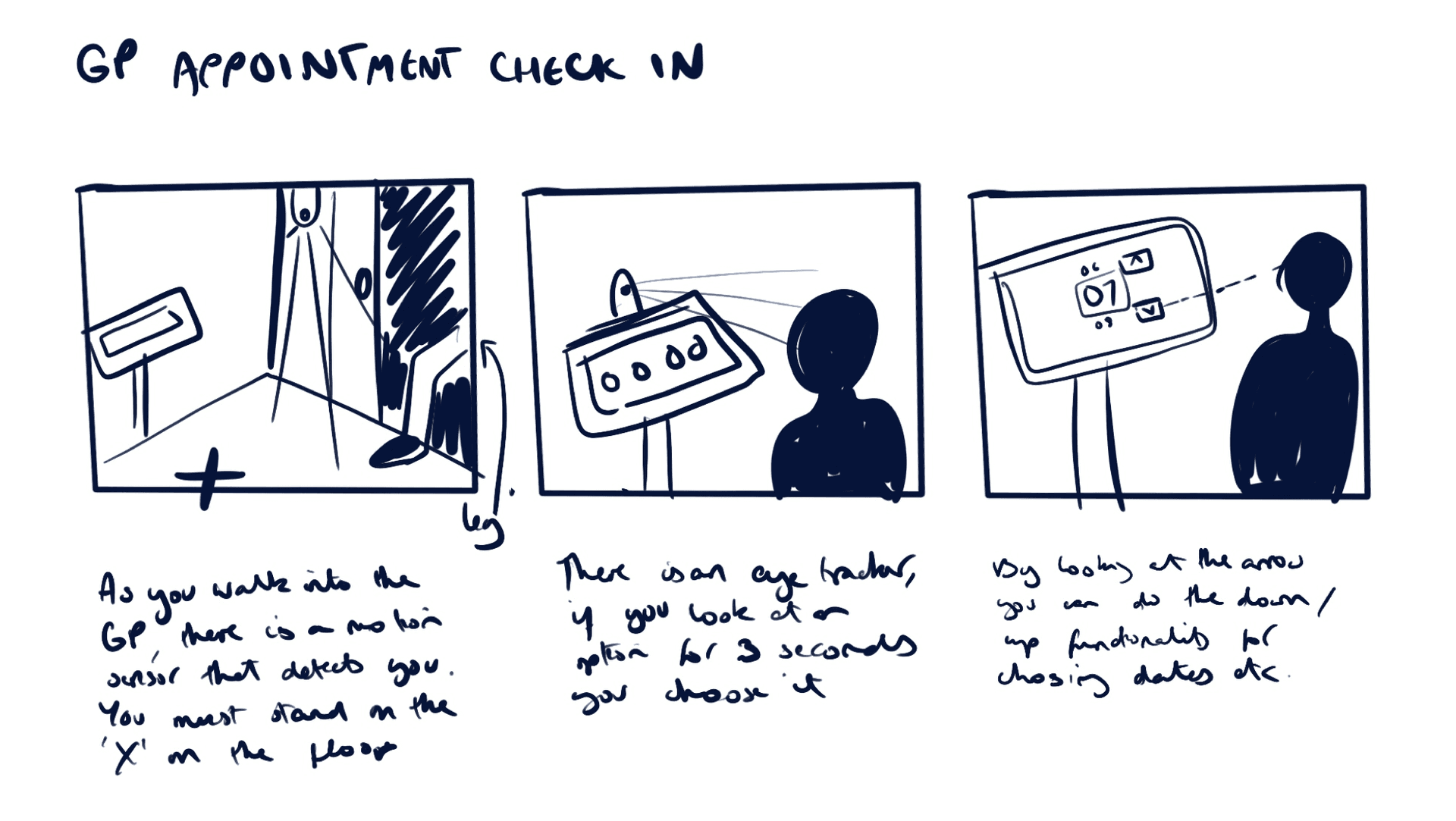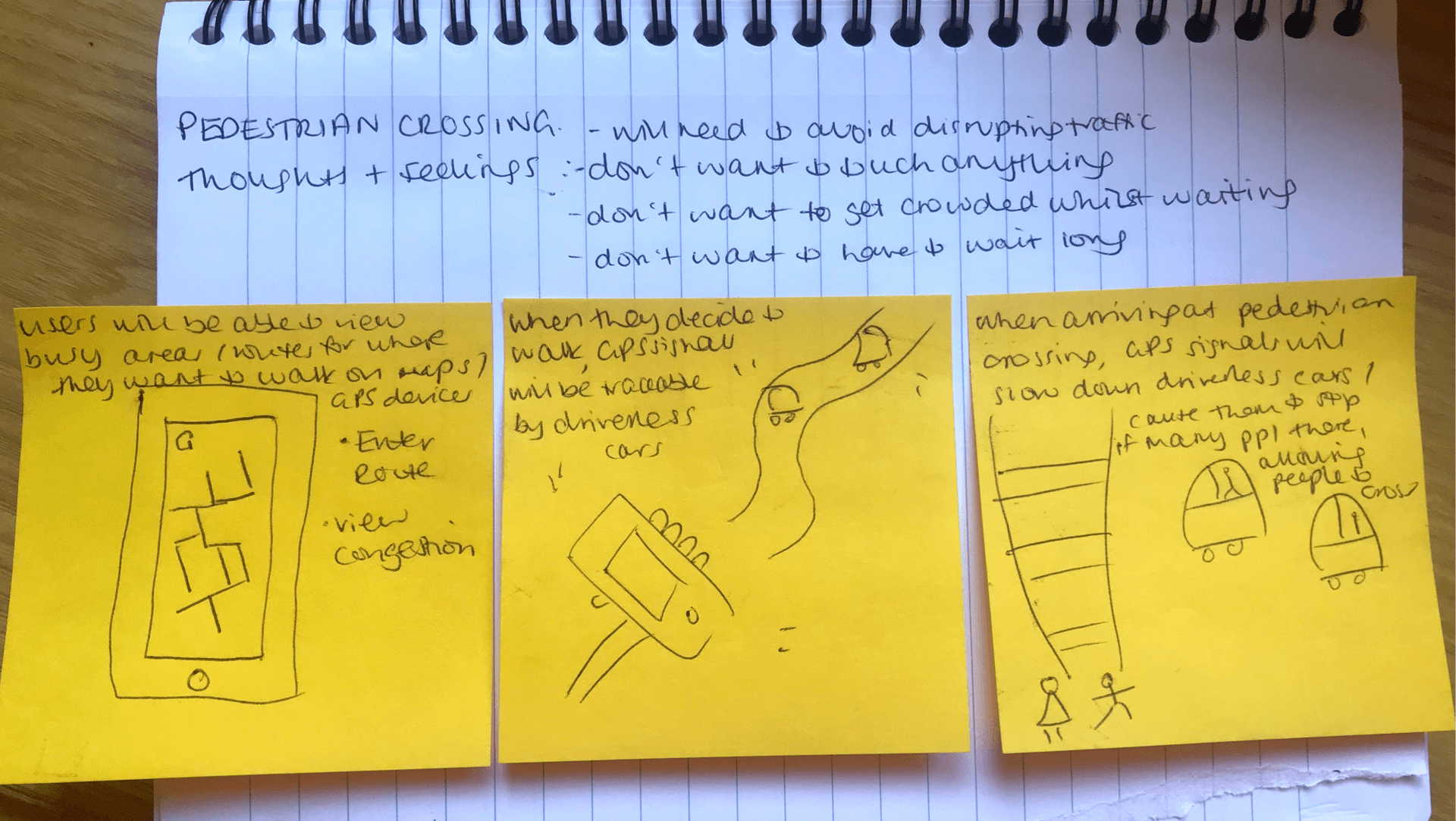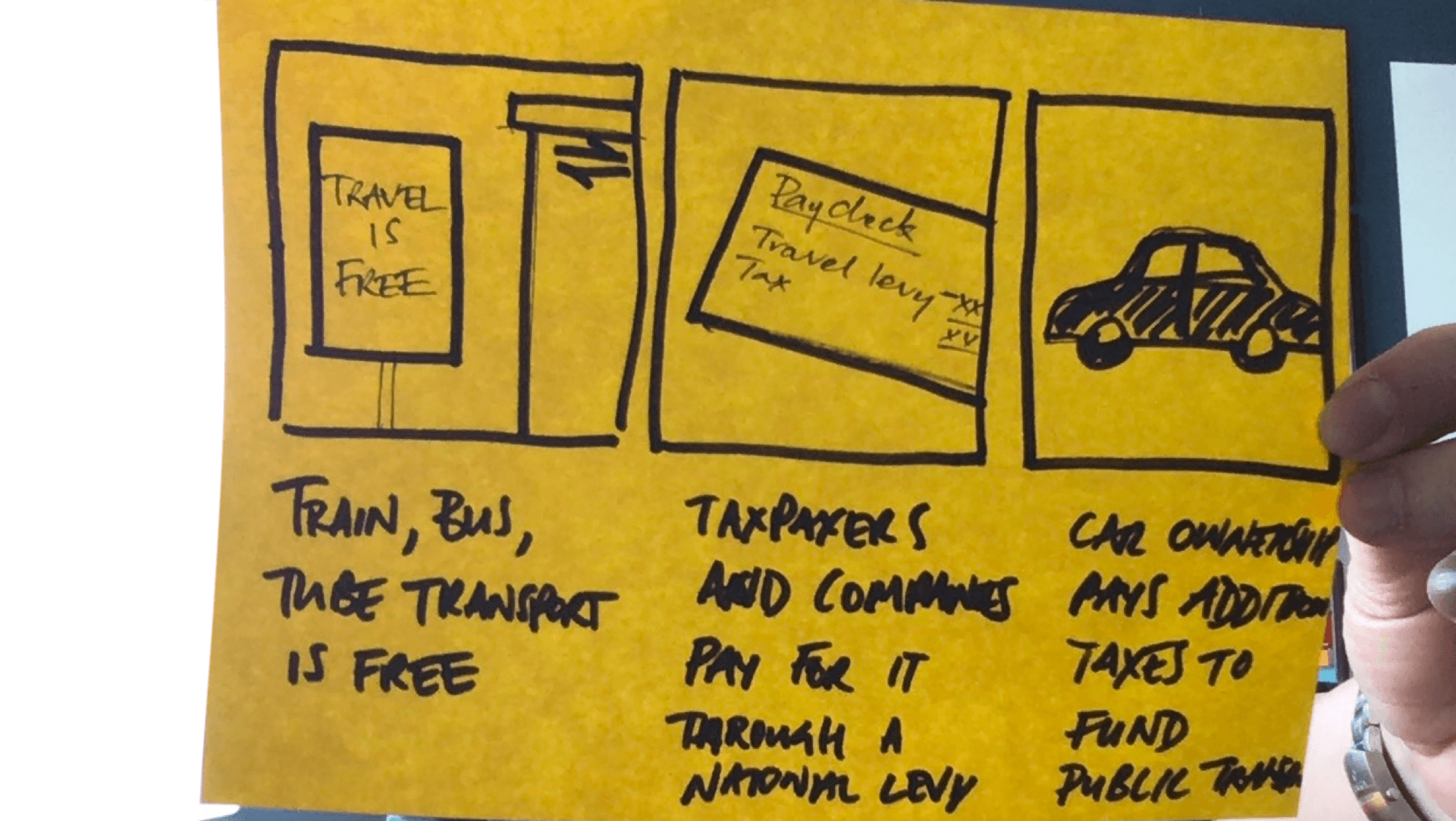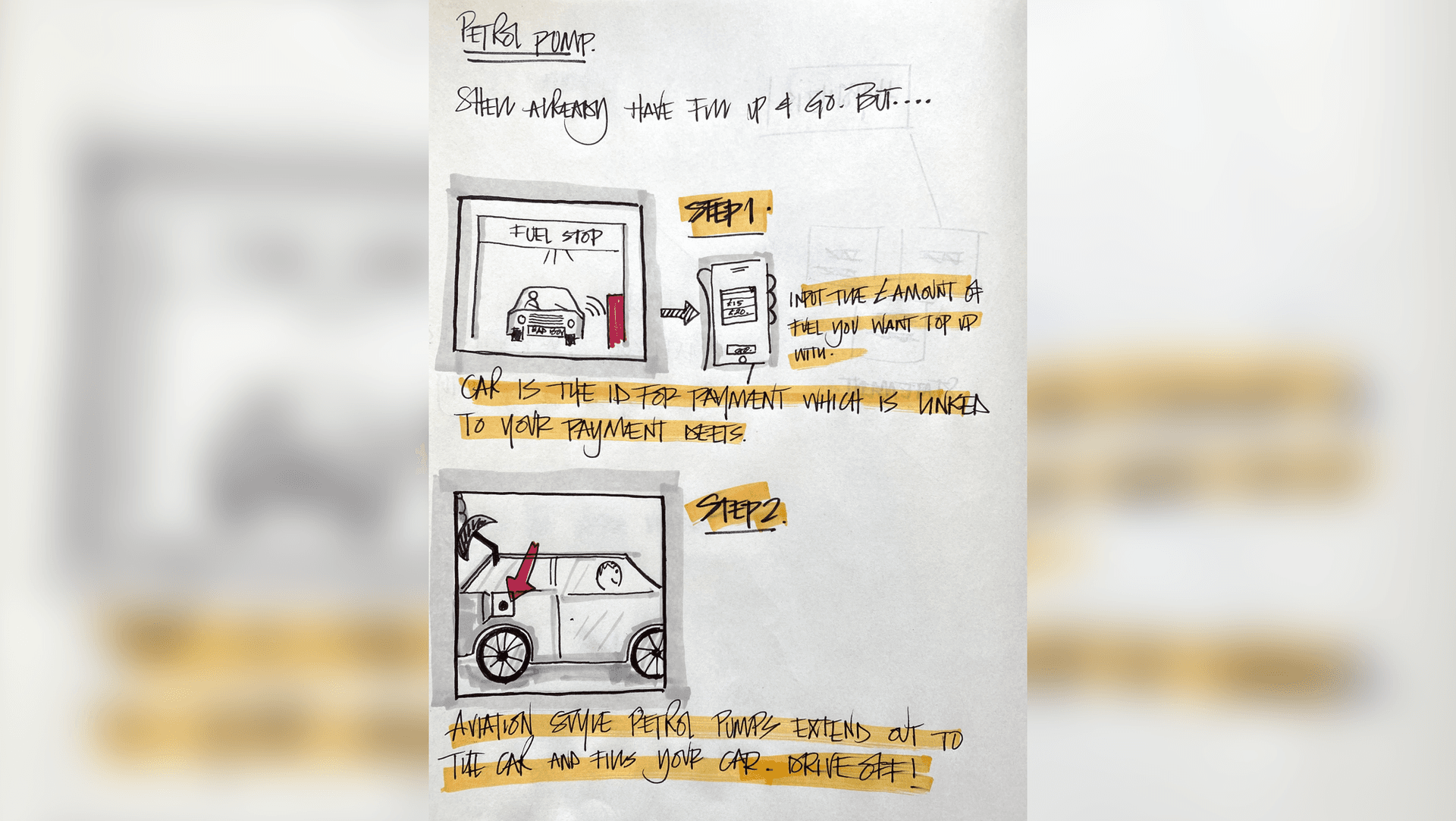Touching technology: preparing for a post-pandemic future
We explore how our relationship with touching technology might change.
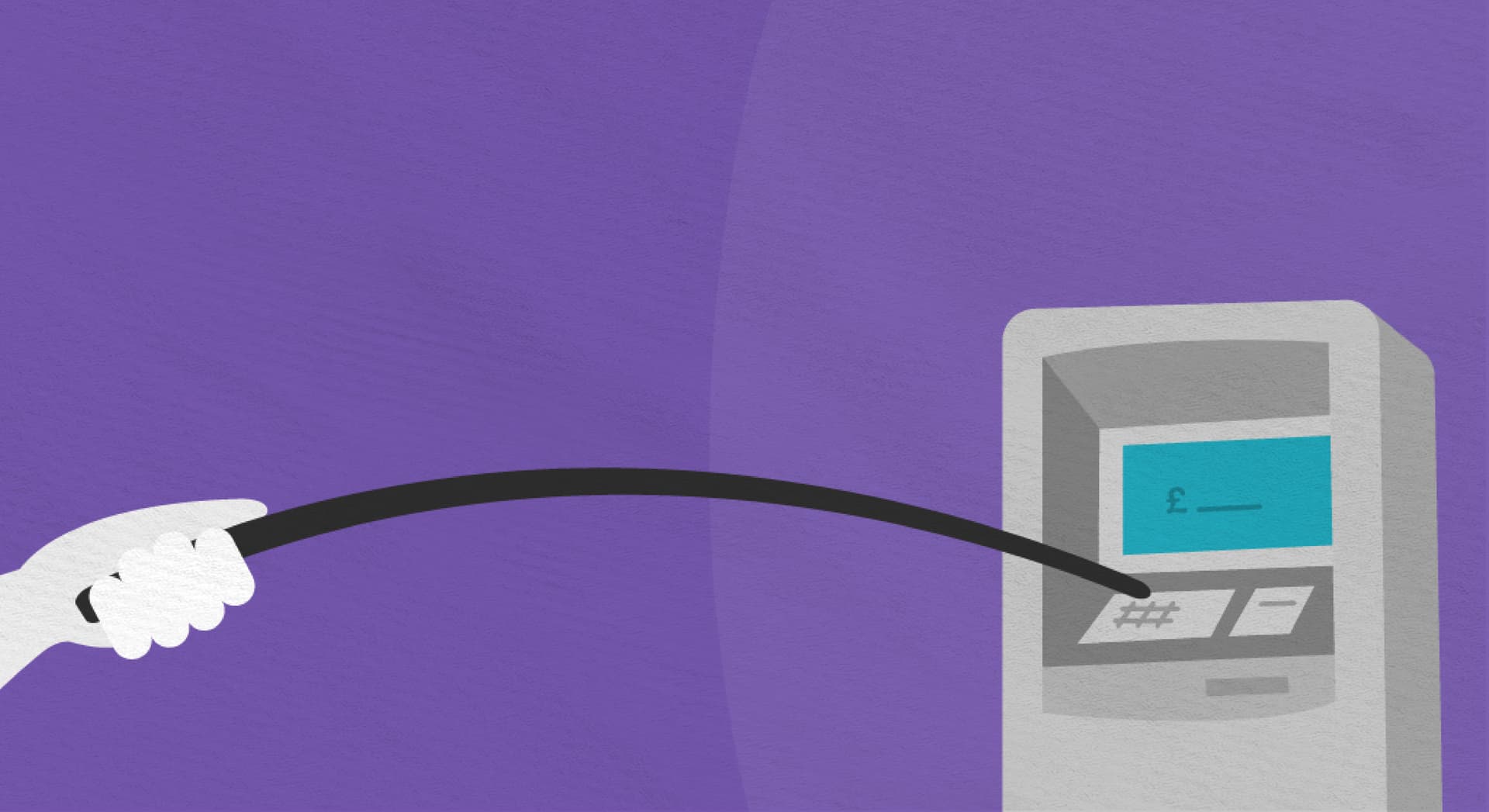
The pessimist complains about the wind; the optimist expects it to change; the realist adjusts the sails
It’s likely that you’ll have heeded recent advice about washing your hands and sanitising surfaces more often and for longer to reduce the spread of COVID-19.
This is normal - for now - as people are painfully aware of the possible implications of touch (not that they have really changed from a scientific perspective).
Unsurprisingly, this means people are changing their attitudes and behaviours.
Every day we see people using anti-bacterial spray to clean phone screens, wearing gloves to go to the shops, and a turn away from exchanging cash.
The changing relationship with touching technology
We asked ourselves what is currently changing and what may we expect to see change about people’s relationship with public technology and interfaces.
And, importantly, will these changes be permanent?
Why do we care?
Because it has potentially far reaching implications for the people-centred practice of experience design. Lots of products and services involve physical touching; self-service check-outs, ATMs, ticket machines – the list goes on…
This means businesses may need to reconsider – in some form - how services are delivered amidst new and unexpected behaviours and attitudes. We may need to adjust the sails…
What does our research say?
We wanted to find out how concerned people actually are about dirty technology in light of the current pandemic.
To answer this, we conducted focus research with family and friends to get a quick temperature check of sentiment and behaviour.
We followed up this smaller piece of research with a larger, nationally representative sample to validate our findings. We found:
Since the outbreak, people are taking a different approach to touch-points and touchscreens common in GP surgeries, banks and retail contexts
74% of people have either worn gloves to use a public touch surface, or wiped down a public touch point
80% of people believe they will behave differently when interacting with public technology that they have to touch
The most common ways in which people expected themselves to act differently were the following:
51% of people aim to always wash or sanitise their hands immediately after using public touchscreens
48% say that they will always use contactless payment where the limit allows
25% stated that they’d use cash machines less
These numbers paint an interesting current-state picture of people’s immediate reaction to this relatively new phenomenon. Could this be the breeding ground for behaviour change?
What can technology do to address these concerns?
Touch technology is everywhere. We see it in lifts, train station ticket machines, ATMs, fast food ordering, delivery signatures, vending machines and so on.
However, there has been considerable development in the area of touchless technology over the last decade.
Take the home automation industry – it’s growing (but maybe not as fast as initially predicted).
People are getting used to controlling media, lighting and heating using voice commands, and Google Home and Amazon’s Alexa have become more established.
When we spoke to Conversational UX Researcher and Designer, David Attwater, he agreed that there are opportunities to embed current voice technology in public spaces.
Similarly, research and development on haptic technology is increasing, while gesture-control of devices is becoming more accurate and reliable. This research and development feeds into a long-tail movement away from physical contact with public devices.
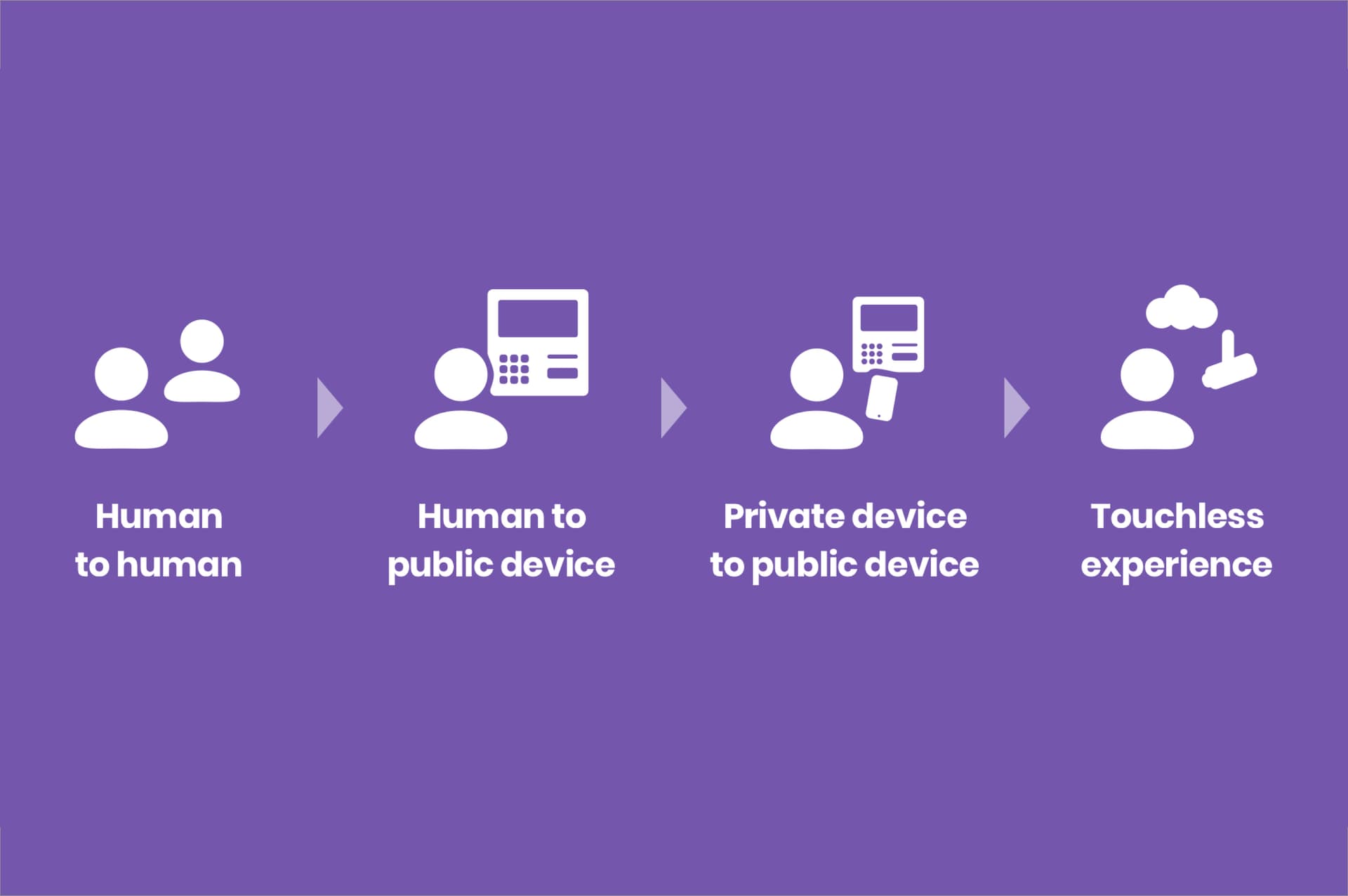
What does this all mean?
Traditional commerce interactions involved human to human contact. To take out money or buy your shopping, you always spoke to a person who served you on an individual human to human basis.
Next came the likes of cash machines and ticket machines, amongst other public devices. These devices can be used by lots of people quickly and don’t require another person to facilitate the interaction. What do they require lots of? Touch.
Private to public is where we think we’re going next.
This means a human controlling a private device, like a mobile phone, to interact with public interfaces. This could mean using your phone to access a cash machine or using mobile payments amongst other interactions.
Touchless experience is the removal of all need to touch, whether that’s a public device or a private device like your phone. Touchless experience would comprise a clever mix of tracking, haptic and voice to facilitate interactions.
Take AmazonGo concept stores as an example, the shop is mapped, you traverse around the space, what you pick up is matched to a data set, you walk out at the end and your card is debited.
Future thinking
Having developed a model for specific industries, we challenged some of our team to sketch touchless experiences for some public touchpoints.
We asked them to imagine experiences where you no longer have to touch an interface that countless others may have touched before you.
Here’s what they came up with…
Helen imagined a state where motion sensors and eye tracking are used to perform on screen tasks when checking-in at a GP. This example shows someone indicating their age.
Emily considered how people could navigate streets in an autonomous future. By using data from vehicles people can understand busy areas, which helps people plan routes. When reaching a crossing, GPS could be used to slow the oncoming cars to a stop or indicate breaks in traffic to users showing them when it’s safe to cross.
Tim’s example changes the pace – by removing touchpoints entirely. Travel is subsidised, meaning most touch-based interactions with user interface technology on all forms of public transport, and any remaining human-to-human contact, are removed.
Rob thought about touchless fuelling. An application allows you to input the amount of fuel you require; cameras recognise your licence plate which is connected to your card. Aviation style pumps then fit to the car automatically upon entering the amount of fuel required.
Will these changes to technology actually happen?
While these ideas and developments are interesting, the question remains, will we actually see them come to life because of an increased awareness of cleanliness and health and the impact it has on behaviour as a result of the current pandemic?
Cost of change is a big factor. We may be on the cusp of very difficult financial times. Will big R&D projects and technological refits be possible, or desirable?
This leads to questions like will there be enough public demand for less touchscreen and more touchless technology to accelerate the trajectory of this change?
What are our current options?
Widespread use of haptics, voice and gesture control may be too far off to make an impact in the short term. We need more intermediary hacks and solutions.
There are smaller developments that can make a difference and alleviate concerns over touching public interfaces. Simple changes such as increasing the limit for contactless payments from £30 to £45 can reduce the need to use chip and pin – thus removing the unnecessary touching of card readers. Even considering trends around the emergence of superapps and greater mobile reliance are noteworthy.
Styluses (depending on the type of screen) are another option which could remove a lot of the physical touching of technology. Their use cases are wide and they’re a single and cheap solution.
Other options include simple steps like providing basic sanitary items next to cash or ticketing machines, meaning people can clean their hands before and after touching the interface.
Another option is indicating the regularity at which touchpoints are cleaned whilst improving the frequency of doing this.
A great data point for measuring any intermediary solution is ‘human touches to purchase’ – using this as a benchmark and working to lower touches is one way to go.
Smartphones: the sonic screwdriver of our times?
Many of us make extensive use of smartphones for all manner of daily activities.
In some ways these devices already reduce the touching of public interfaces - the public phone box is a thing of the past. With mobile payment possible we can use our phones in shops and on public transport.
There may be potential for the development of this technology to extend the range of uses for our phones, turning to phone-operated ATMs and including scan-and-go options. This makes gestural cues combined with electronic signals a promising avenue to explore.
Moreover, there is consumer appetite for this. In our quantitative research study, seven in 10 people said that they would prefer to use their phones as the interface to connect with services instead of using touchscreens.
Naturally, there may be concerns around doing so, including the security of centralised and shared data.
If this became the new normal, the challenge would be to design with trust and security as the central design principles. Each interaction would need to give the user a sense of this regardless of how small, particularly during early adoption.
With a singular tool, the user may quickly lose track of all the interactions they are having.
What does the future hold?
We can’t predict the future, but we have done some thinking about it.
We can’t say for sure if people’s relationship with technology in public spaces will change permanently but the early signs are that it might. Paying attention now to this rapidly changing field will help you get ahead of the competition.
We’re not on the cusp of an entirely touchless future but we are seeing an early aversion to touch, or a desire for less touch where possible. Products and services will have to change to accommodate this irrespective of the fidelity of these changes.
The team who conducted this project were Rita Quigley, Mike Pertwee, Stephanie McGahan and Isabelle McWilliams.
